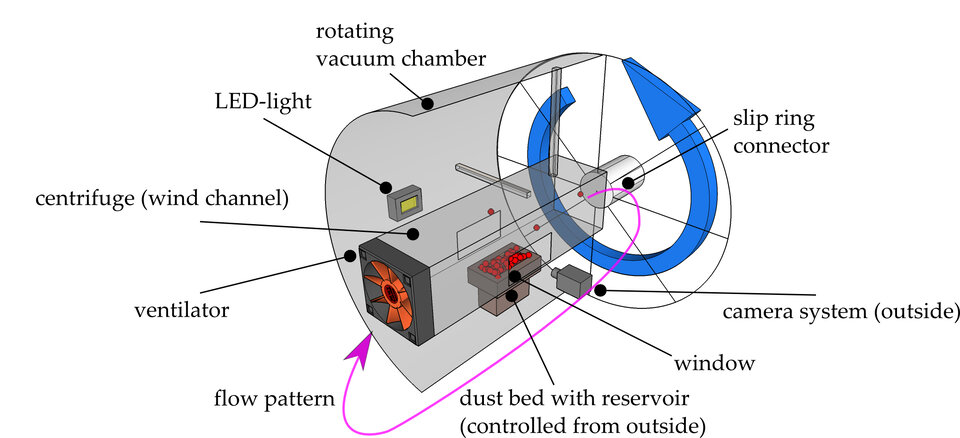Meet the teams: Anemoi4 team
The Anemoi4 team is composed of two PhD and two Master students from the University of Duisburg-Essen in Germany. They want to study wind induced dust lifting in different gravitational environments, such as the Martian surface, to get a better understanding of adhesive dust properties.
![]()
Wind Induced Dust Movement in Low-Gravity Location (WINDMILL)![]()
![]()
| University | Universität Duisburg-Essen, Germany |
| Endorsing professor |
Gerhard Wurm Universität Duisburg-Essen, Germany |
| ELGRA mentor |
Frank Daerden Belgian Institute for Space Aeronomy |
| Team |
Grzegorz Musiolik Tunahan Demirci Björn Schrinski Maximilian Kruß |

Dust storms on other planets are often used as a dramatic element in sci-fi movies, most recently in the Martian. In fact dust storms on Mars are not a product of the imagination of some Hollywood directors but can regularly be observed on the Martian surface. In the early 80's experiments in wind channels on earth were made to investigate this phenomenon and lead to the conclusion that dust cannot be lifted up by typical wind speeds on Mars. There have been many discussions about the mechanisms responsible for dust lifting and new ideas are introduced until recently. Nevertheless no experiments have been conducted under altered gravitational levels. Results from experiments under 1g were solely extrapolated to Martian levels. Until today reduced g experimental data is still missing.
The Anemoi4 team designed an experiment to measure the wind velocities which are needed for dust to be lifted up in various gravitational environments. As dust sample they use so-called JSC which is usually used as Martian soil analogue. The dust bed is placed inside of a small wind channel filled with CO2 at a pressure of 6mbar to recreate the Martian atmosphere. This wind channel will be placed inside a centrifuge to simulate different gravitational potentials. This setup offers the possibility to investigate dust lifting in the range of 0 - 1g during the state of microgravity in a parabolic flight. The dust bed is observed optically by a camera with up to 100 frames per second to determine the threshold wind velocity at which dust starts to lift up.

The results of the student team from Duisburg will give an insight how the sticking properties in a dust bed behave in different gravitational environments. In particular they will be able to measure experimentally, whether solely air flow can be responsible for dust saltation on Mars. The results will provide new important findings and could be relevant for rover missions or even manned space missions to Mars in the future.


